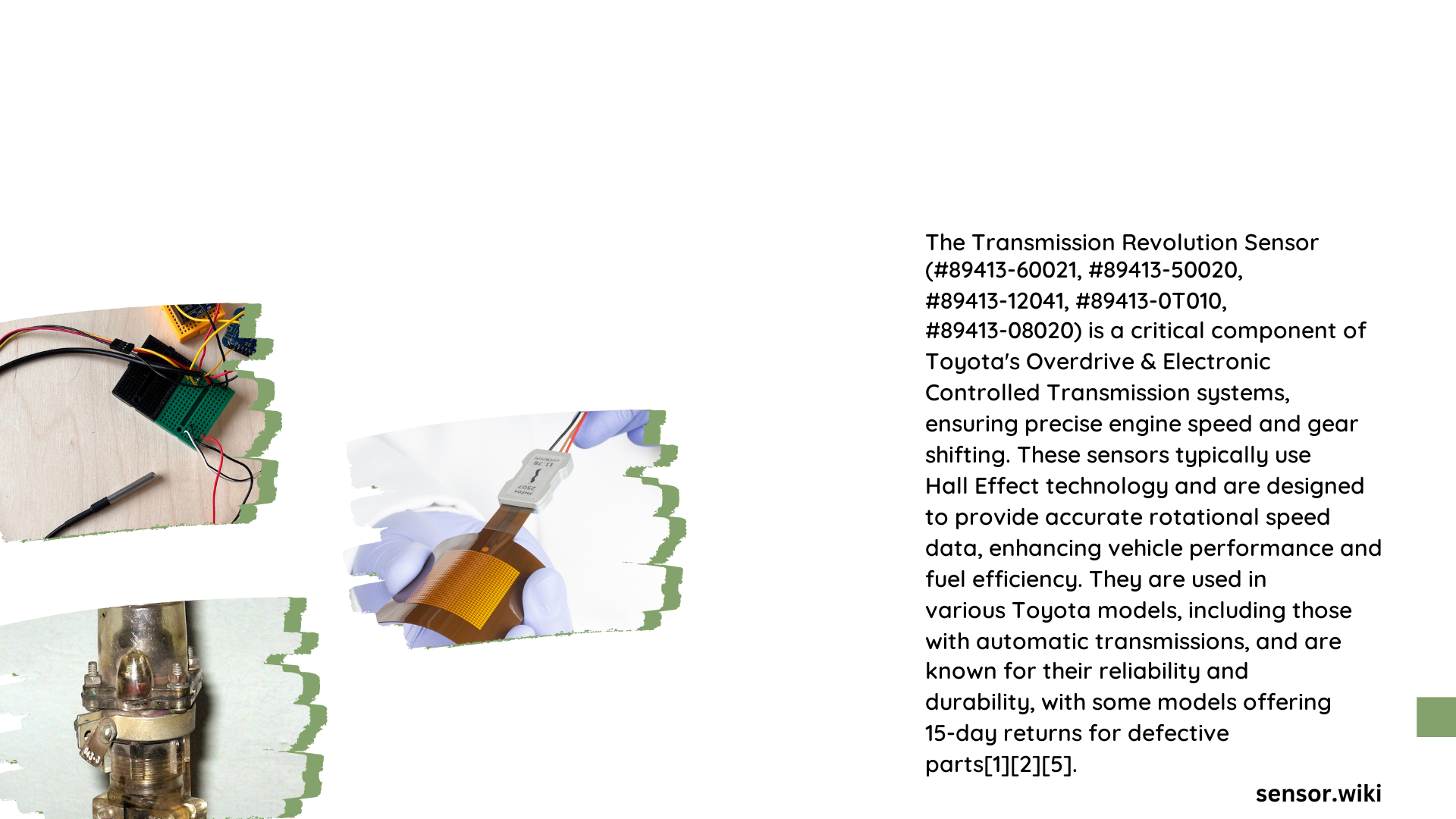The transmission revolution sensor represents a critical electronic component in modern vehicle powertrains, enabling precise monitoring of rotational speed and transmission performance. This sophisticated sensor provides real-time data to the vehicle’s computer system, facilitating optimal gear shifting, torque management, and overall drivetrain efficiency across various automotive applications.
What is a Transmission Revolution Sensor?
A transmission revolution sensor is an electronic transducer designed to measure rotational speed within a vehicle’s transmission system. Its primary function involves converting mechanical rotational movements into electrical signals that can be interpreted by the vehicle’s Engine Control Unit (ECU).
Key Characteristics of Transmission Revolution Sensors
| Sensor Type | Typical Voltage Range | Response Time | Mounting Location |
|---|---|---|---|
| Hall Effect | 0-5 Volts | <10 milliseconds | Transmission Housing |
| Magnetic Pickup | 0.5-2 Volts | <5 milliseconds | Near Rotating Components |
| Inductive | Variable | <15 milliseconds | Transmission Valve Body |
How Does a Transmission Revolution Sensor Work?

Signal Generation Mechanism
Transmission revolution sensors operate through multiple detection methods:
- Magnetic Field Disruption
- Generates electrical pulses when metallic teeth pass sensor
- Provides precise rotational speed measurements
-
Highly accurate in dynamic driving conditions
-
Hall Effect Principle
- Utilizes semiconductor materials
- Converts magnetic field variations into electrical signals
- Offers enhanced durability and reliability
Common Symptoms of Transmission Revolution Sensor Failure
Diagnostic Indicators
- Unexpected transmission shifting
- Reduced fuel efficiency
- Check engine light activation
- Inconsistent vehicle performance
- Transmission slipping or jerking
Replacement and Diagnostic Procedures
Tools Required for Sensor Replacement
- Digital multimeter
- Socket wrench set
- Diagnostic scan tool
- Penetrating lubricant
- Torque wrench
Step-by-Step Replacement Process
- Disconnect vehicle battery
- Locate sensor mounting location
- Remove electrical connector
- Extract old sensor
- Install new sensor with proper torque specifications
- Reconnect electrical connections
- Perform system diagnostic scan
Cost Considerations
Sensor Replacement Expenses
- Part Cost: $50 – $150
- Labor Charges: $100 – $300
- Total Replacement: $150 – $450
Advanced Troubleshooting Techniques
Electrical Diagnostic Approach
- Measure sensor resistance
- Check voltage signals
- Verify wiring integrity
- Analyze signal frequency
- Compare readings with manufacturer specifications
Best Practices for Maintenance
Preventative Strategies
- Regular transmission fluid changes
- Annual sensor performance checks
- Use high-quality transmission components
- Follow manufacturer recommended service intervals
Technical Specifications
Sensor Performance Parameters
- Operating Temperature: -40°C to 125°C
- Voltage Requirements: 5-12 Volts DC
- Signal Frequency: 0-10,000 Hz
- Accuracy: ±1% of measured value
Conclusion
Understanding transmission revolution sensors requires comprehensive knowledge of automotive electronics and mechanical systems. Proper maintenance and timely diagnostics ensure optimal vehicle performance and longevity.
